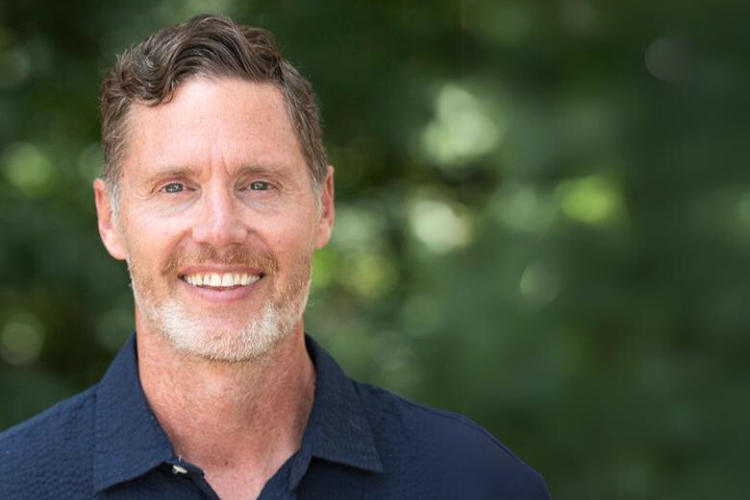Brett Jacobsen, Ed.D., is the CEO of The Mount Vernon School, Mount Vernon Online and Mount Vernon Ventures based out of Atlanta, Georgia. Under his leadership, Mount Vernon has gained a national reputation for innovation in education, while increasing enrollment by 60%. In 2012, Jacobsen launched the R&D lab Mount Vernon Ventures, which serves educational communities throughout the world. Ventures focuses on consulting, product development, research and development, and business development, and non-tuition revenues are invested back into the school. The school was an inaugural recipient of NBOA’s Jeffrey Shields Innovation in School Business Operations Award in 2021. He has been hired as the next president of the Southern Association of Independent Schools and will start that position later this year.
Net Assets: We’re thrilled to have you as a speaker at the upcoming Annual Meeting, centered around the theme “Rooted in Excellence, Growing Together.” Given your background in innovation, does the first part of the theme resonate with you?
Brett Jacobsen: It brings to mind Jim Collins’ book, “Good to Great,” which remains a valuable resource for me today. The book emphasizes the importance of disciplined people, thoughts and actions. The synergy of these elements drives significant progress and fosters accountability. I believe that the demand for these three aspects strongly aligns with the concept of being rooted in excellence.
Net Assets: Innovation often requires taking calculated risks. What guidance can you provide to leaders who may be hesitant to embrace change due to concerns about potential failures or resistance from community members?
Jacobsen: I would encourage school leaders to perceive innovation as a more approachable opportunity. The concept of innovation might seem vast and overwhelming, potentially too revolutionary for a community. I would challenge independent school leaders with this question: What is your innovation intention?
There are three levels of innovation intention. The first, incremental innovation, involves making small shifts and adjustments, refining an organization’s programming, processes or systems. This level is the most accessible and doesn’t require significant financial investment. The second level, breakthrough, involves substantial and meaningful changes in the way you conduct business. It involves replacing one system and methodology with another. If your innovation intention aligns with making small shifts or tweaks, it serves as a stepping stone toward more transformative change, where systems and methodologies are replaced entirely. At scale, the third and greatest innovative investment would be focused on disruption, acting as if your industry did not exist. This could be a disruptive “school-within-a-school” model.
Net Assets: As education rapidly evolves and schools must adapt to remain relevant, what steps can school leaders take to foster a culture of innovation and adaptability among their faculty and staff?
Jacobsen: It all begins with school leaders embodying a growth mindset, creating an environment conducive to consistent engagement in listening, questioning, investigating and exploring. Understanding how autonomy, mastery and purpose inspire and motivate employees is also crucial. Curiosity is where the deepest learning and most significant transfer occur, so nurturing a culture of curiosity is fundamental in fostering innovation within your school. Moreover, it necessitates organizations confronting the “brutal facts of their realities,” to take once again quote Jim Collins. This involves schools deeply reflecting and analyzing their past to better navigate the path forward.
Net Assets: Your experience as a certified foresight practitioner brings a unique perspective. What advice do you have for school leaders seeking to integrate foresight into their strategic decision-making processes?
Jacobsen: To shape your future, it’s vital to be actively scanning for signals — evidence of the future that isn’t readily apparent in today’s world. We need individuals who can identify tangible, compelling observations about how the world is evolving, providing insights into where we might be heading. For example, in 2020, the National Center for Education Statistics made the statement that “education is out, business is in.” They are referring to the fact that in the 1970s, 21% of people enrolled in colleges and universities were studying education, whereas in 2020, only 4% of students studied education. This statistical shift gives us a glimpse into the future of the education industry.
Here’s another example: In May 2020, the California college system announced they would phase out the SAT and ACT, adopt a test-optional policy for two years and then stop using the tests altogether. That headline rocked the education world three years ago, and now [more than 80% of four-year colleges have test-optional admissions policies.]
Net Assets: How do school leaders become adept at reading signals?
Signals can come by way of reading a billboard on your drive to work; passing students in the hallway and hearing about emerging trends; articles shared on social networks like LinkedIn. Once you gather these signals, organizing and synthesizing this information becomes crucial, followed by posing key questions.
Jacobsen: Reading signals isn’t exclusive to specific roles; it can involve trustees, executive leadership teams, or even attentive faculty and staff. Signals can come by way of reading a billboard on your drive to work; passing students in the hallway and hearing about emerging trends; articles shared on social networks like LinkedIn. Once you gather these signals, organizing and synthesizing this information becomes crucial, followed by posing key questions. What demands further research? Where should we explore and whom should we engage with?
After that, it’s about crafting potential future scenarios, even those that might seem far-fetched. Embrace stretching boundaries and writing narratives that may feel like fiction. By expanding your capacity to envision potential futures, you’re on the path toward applying innovative, real-world strategies that might have previously seemed overly ambitious.
Net Assets: This brings to mind the cases of Mount Vernon Ventures and Mount Vernon Online. How did signals contribute to envisioning and launching those initiatives?
Jacobsen: The COVID-19 pandemic revealed that, yes, people want in-person educational options — but they are also seeking out multiple pathways and flexible options when it comes to completely their coursework. In response, we introduced Mount Vernon Online, not solely as a platform for students to complete coursework and graduate but also as a gateway to summer opportunities and innovative courses for an audience with diverse backgrounds and educational goals.
Mount Vernon Online extends beyond serving as a grades 9-12 asynchronous learning hub. It provides varied pathways for our current students and those worldwide to access Mount Vernon’s offerings in ways previously unexplored. This initiative was heavily influenced by recognizing the evolving educational landscape and the necessity for adaptable learning platforms.
Net Assets: The journey of expanding a successful program to a global scale is truly inspiring. Speaking of global audiences, what can attendees of the 2024 NBOA Annual Meeting look forward to learning about?
Jacobsen: As educational leaders, we are living in a very transitional period. So how do we best equip ourselves to guide our communities through this uncertain period? My keynote presentation aims to offer practical tools and inspiration that schools can implement within their own contexts. Sharing the Mount Vernon story isn’t about prescribing a strict blueprint for others to follow. Instead, these transformative narratives encourage introspection within our respective school stories. The goal is to foster mutual learning and navigate this transitional phase, potentially reshaping the trajectory of independent schools as we know them.



.png?sfvrsn=a0b06f90_1)

